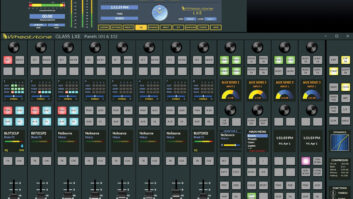The author is CEO of ACE Medias Tools.
All media organizations, regardless of size, number of studios or technical infrastructure, must be prepared to cope with a large-scale disaster that could interrupt their broadcasts. A flood, a fire or simply the impossibility to access their studios is a major concern, knowing that only about a quarter of the companies that have suffered a major disaster will survive economically.

In the past, those who had the means built makeshift rescue studios as a solution, but this came with many drawbacks, including lack of system upgrades, remote operational maintenance and teams as well as substantial investment. Due to the heavy financial burden, many companies skip a business recovery plan solution.
CLOUD ADVANTAGES
One of the major benefits of cloud technology is the ability to allow its users to decentralize IT services outside the technical (radio) infrastructure and make them accessible from anywhere, as long as a connection is available. Cloud computing can aid in disaster recovery and it’s important for stations to consider the reality of having their technical infrastructure virtualized with cloud solutions.
Content handling, media asset management, client databases and program backup are just a few examples of areas that can be managed easily via the cloud. Having a backup is paramount to the quality of a Business Continuity Plan. Having up-to-date content accessible from anywhere, anytime is an undeniable advantage as it will help avoid program interruption and ensure the broadcast of up-to-the-minute content.
Specialized IT service companies can manage measurement variables of all content effortlessly. The cost is proportional to the consumption of storage and bandwidth. User fees for content services are becoming extremely flexible. Also, service providers ensure online content maintenance by organizing the replication of data, guaranteeing availability.
As regards signal processing such as audio routing, the mixing of on-air sources or audio processing of on-air broadcast sources, broadcasters increasingly are implementing IP technology. These real-time audio processing services are becoming more accessible and it’s now possible to decentralize these technologies gradually as well. The only limitation today lies in the latency inherent to the network in the case of a remote cloud hosted on medium or long distances.
In short, cloud technology brings broadcasters many benefits, including lowering investments, remote access to updated technology and data and permanent availability. The cloud allows users to create a relevant business continuity plan, ensuring continuous radio operations no matter the conditions or the cause of the disaster that could affect a media house.
By progressively virtualizing of all services, a radio broadcaster ? transitioning from a technical/hardware model to a network/software engineering model ? will be able to follow technological developments while remaining economically competitive. It will also guarantee its customers the distribution of its advertisements, whatever the circumstances, which should not be overlooked.











